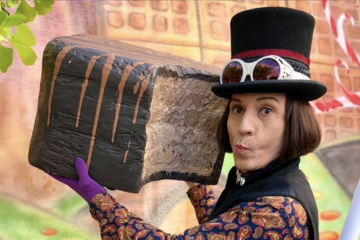We’re Living Through the Golden Age of Yellow Journalism
This originally appeared in my Broke-Ass City column for the SF Examiner.
I don’t know about you, but I’m burned out. I spend so much time absorbing the constant barrage of information that bombards me from my computer and phone that I feel totally drained.
I have some of my best “ah ha!” moments in the shower because it’s often the only part of my waking hours where I’m not consuming some form of media. It’s the only part of my regular day where my mind has free time to wander where it pleases.
I’ve been fantasizing lately about the late ‘90s and early ‘00s. I’ve been wishing we could revert to Web 1.0, back when we were excited about the Information Superhighway instead of the current Web 666 where we are demoralized by the disinformation monster truck rally.
I know I’ve used that analogy before but it’s just so fitting. It no longer feels like The Web is about learning new things and educating ourselves; instead we spend all day smashing our ideas into each other in a futile attempt to get people to come towards our point of view. The problem, though, is that there is too much news and not enough information. And by that I mean, actual, real, well researched journalism is getting pushed aside by bullshit, click-baity “content.”
This is the golden age of yellow journalism. The term came about around the turn of the last century when Pulitzer and Hearst battled each other for newspaper circulation by sensationalizing the news. Wikipedia defines yellow journalism as “journalism and associated newspapers that present little or no legitimate well-researched news while instead using eye-catching headlines for increased sales.”
The veracity of Wikipedia as a source is a subject for another time, but doesn’t the definition perfectly encapsulate our current state of news? Not only are people letting poorly researched articles inform their world view, some are literally getting their “facts” from memes made by anonymous people on the internet. Yet these are the same folks who brush off actual, well-researched journalism as fake news.
There’s a number of reasons. One is that information moves too fast these days. Starting with 24-hour cable news networks and then continuing to the invention of social media, the ability to get information out immediately has pushed the idea of being the first to break news to an unprecedented level. More and more publications would get the news out semi-verified and then correct or retract it later rather than get it right the first time.
Another reason is that actual journalism is severely underfunded. Both print and digital publications are disappearing at an alarming rate because the business of media is broken. You know all those stupid banner ads you see on websites? An article needs to get, like, 1,500 views to make a single dollar. How are you supposed to fund good journalism that way?
On top of all of it all, we’ve had a decade of being conditioned to expect sensationalized headlines and images. The Facebook algorithm spent years making garbage go viral by rewarding articles with headlines like “You wouldn’t believe what the Obamas just did in public.”
Combine these points, and it’s easy to see how we got where we are today, and even easier to see how the GOP has exploited them. Take the need and ability to create constant news, combine it with underfunded publications, and serve to a populace conditioned to only pay attention to the biggest spectacle. The fact that Donny Tr*mp now labels anything that’s critical of him as “fake news” is even more terrifying because it undermines the legitimacy of the already underfunded publications actually doing the real work.
Look, I know that I’m part of this, too. Not all the articles on BrokeAssStuart.com are up to the standards of the New York Times or the Washington Post. But the reason for that is because of the impossible economics: It costs $4,500 a month to run my site (paying writers, editors, hosting fees, etc) yet an article has to get 1,500 views to make $1.
It’s an impossible equation.
But there’s a good solution: Become a supporter of your favorite publications. If you expect news sources only to make their money from diminishing advertising revenue, then you should also expect them to die. Pick a couple media outlets and pledge $5 or $10 a month or whatever you can afford. Sure, it might mean a couple less cups of coffee, but you’re helping fund one the of the most important parts of a healthy democracy, the free press.
If the 60K Facebook fans I had pledged $5 a month I’d be able to make my site ad free as well as hire the best journalists in the world. That’s why I started a Patreon page where people get rewards for monthly pledges. I know I won’t get all 60K people to join, but every bit helps. Please kick in $6 a month to help keep BAS alive!
Other publications like The Guardian UK have a little place at the bottom of articles where you can become a supporter. Others, such as the New York Times and the San Francisco Chronicle, only allow you to view a certain amount of articles a month before you have to pay.
Regardless, it’s up to all of us to help stop the dumbing down of America. That’s what got us here. The easiest way you can do this is by supporting good journalism.










